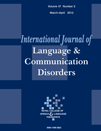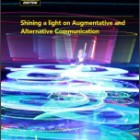Background: There has been a rapid growth in recent years of available technologies for individuals with communication difficulties. Research in the area is currently underdeveloped with practitioners having a limited body of work on which to draw to guide the process of intervention. Concerns have been raised that this newly developed technology may have limited functional usage.
Aims: This review aims to investigate the potential barriers and facilitators to high-technology AAC provision and its ongoing use. The aim of the analysis is to explore factors underpinning use rather than effectiveness, thus it synthesized data from predominantly qualitative and survey studies reporting the views and perceptions of AAC users or staff providing the devices.
Main Contribution: The review highlights the range of factors that can impact on provision and use of high-technology AAC, which practitioners should consider and address as appropriate in the intervention process. These include: ease of use of the device; reliability; availability of technical support; voice/language of the device; decision-making process; time taken to generate a message; family perceptions and support; communication partner responses; service provision; and knowledge and skills of staff. The work outlines how qualitative synthesis review methods may be applied to the consideration of published material that is not reporting outcomes data, and how this may provide valuable information to inform future studies.
Conclusions: Practitioners should be aware of barriers and facilitators to successful use when making recommendations, and consider how barriers where present might be overcome. Aspects of service delivery such as ongoing technical support and staff training may require further consideration. The synthesis of evidence describing views of users and providers, and the implementation of high-technology AAC systems, can provide valuable data to inform intervention studies and functional outcome measures.

 AAC Evidence Base
AAC Evidence Base